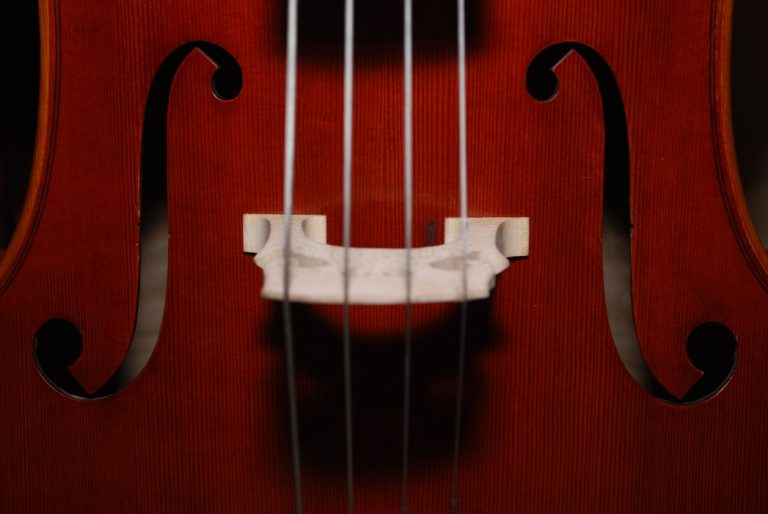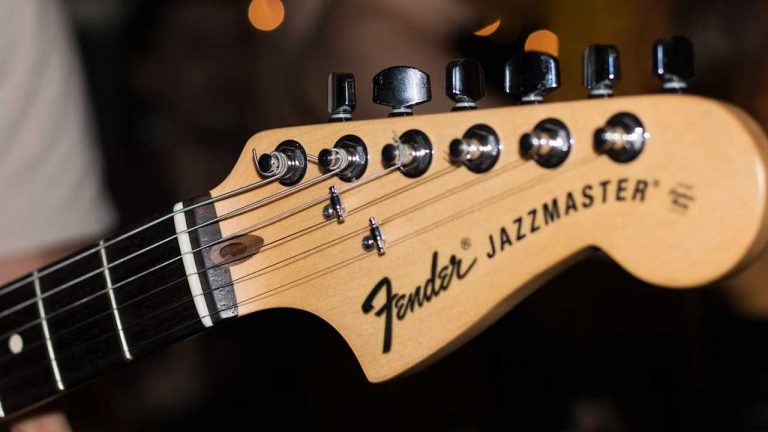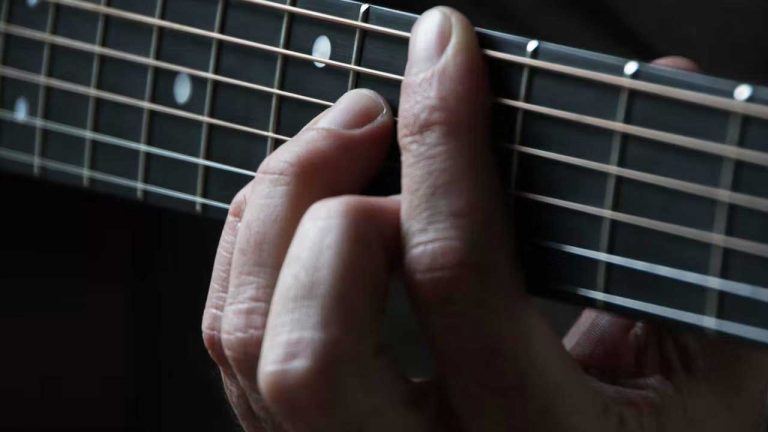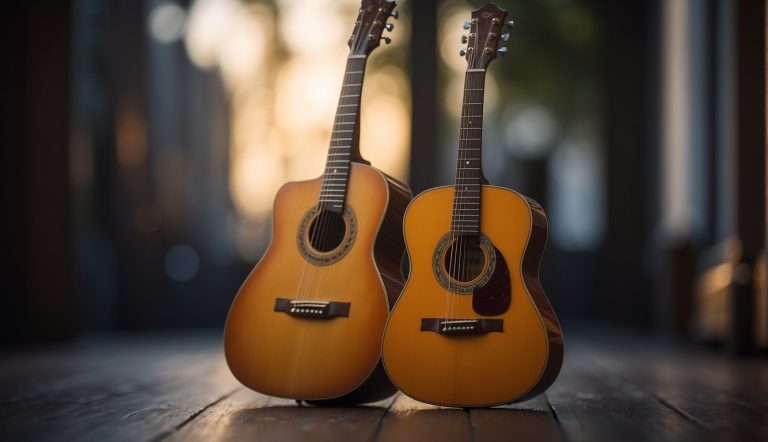Lute Vs Guitar – Common Questions
Folkstrings.com is reader-supported. When you buy through links on our site, we may earn a small commission.
Table of Contents
- Lute Vs Guitar The Main Differences
- Can You Play Lute Music on the Guitar?
- Lute Vs. Guitar Sound
- Can Guitar Players Play Lute Easily?
- Historically Famous Lute Players?
- Lute Vs Guitar – Conclusion
The lute is not a single instrument, but rather a broad category of stringed instruments. Lutes come in all sizes and shapes and with different types of strings. Many instruments have developed from the first lutes, including the modern guitar.
The lute has an egg-shaped body, with a long, fretted neck. The rounded body and flat front are what distinguish this beautiful instrument from others.
Lutes are often associated with the Renaissance period because they rose in popularity around the 13th century. This instrument was brought into Europe via Spain, and it is still played in many Arab countries. It is now seeing a revival in many parts of the world.
Lute Vs Guitar The Main Differences
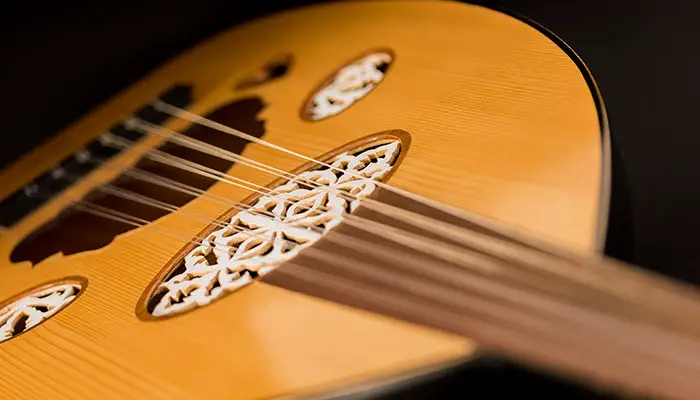
Often, people are interested in learning how the lute compares to the modern guitar. Although there are some similarities, there are definite differences as well. The following are some differences.
· One obvious difference is the appearance of the two. Both have a flat front, but the lute has a rounded egg shape on the back, while the guitar has a flat back.
· Although some lutes are much larger than guitars, they are almost always lighter in construction than the guitar. This makes them easier to handle.
· The construction of the lute makes it much more responsive than a guitar, but it lacks the volume of a guitar.
· The lute’s strings also differ from a guitar. The lute has double strings, and they are tuned differently and in pairs. The strings on a guitar are thicker than the lute.
· The lute sounds brighter and crisper than the more mellow tones produced by the guitar.
· The pegbox is bent backward, so the gut strings retain their tension level.

Although a guitar is in the lute family, there are obvious differences that make it easy to tell the two apart. Being aware of the differences can help musicians to better understand the lute and what makes it so special.
Can You Play Lute Music on the Guitar?
Many musicians love the sound of the lute, but they are guitar players and do not want to take the time to learn the lute and all it entails. Thankfully, it is possible to play lute music on the guitar.
It is quite surprising how easy it is to get a guitar to sound like a lute. All you need to do is tune the 3rd string from a G down to an F sharp. If you are a classical guitar player, you should not have trouble.
The reason you tune down the 3rd string to F sharp is that this creates an open F, so you do not have to fret to play the chord. This is important for being able to play hundreds of lute tunes.
Introducing a capo will add even more of a lute sound to your guitar. Putting a capo at the third fret helps to create brighter and lighter sounds from the guitar, bringing it closer to a lute style.
Both methods can create a lute sound. It is up to you which one you choose to use. Try them both to see how they sound, and then decide.
Lute Vs. Guitar Sound
The differences in sound between the two instruments are primarily equated to their strings. The guitar has much thicker strings, and they are tuned slightly differently than the lute.
Modern lutes are strung with animal gut, nylgut, or nylon. Modern guitar strings are typically nylon that may be wound or unwound.
Because of the lighter construction and strings, the sound the lute produces is much higher, brighter, and melodic than the guitar. The guitar has a deeper sound, even to the untrained ear.
It is easy to distinguish the two by sound alone. There is a certain lift to the lute that cannot be fully achieved with the guitar, even if you tune it to lute standards or use a capo.
Many people have trouble describing how melodic and romantic the lute sounds. It is one of those instruments you will never forget when it is in the hands of a masterful player.
Can Guitar Players Play Lute Easily?
Although some lute players start playing the lute exclusively, many come to this beautiful instrument as they transition from the guitar.
Many musicians have fallen under the spell of the lute, from classic to electric guitar players. There is just something special about this amazing instrument that draws people’s interest and keeps it.
One of the biggest differences in playing the lute is that it has courses of strings, instead of single strings like on the guitar. Five of the strings are doubled, but the player can change them to single, even though courses are the standard for lutes.
Left Hand
When it comes to the left hand, most classical guitarists should have no trouble transitioning to the lute. Just like with a guitar, the thumb supports the back of the neck and the fingers are held over the courses. Because of the courses, the left hand must remain as precise as possible.
Right Hand
The right hand presents a bit more of a challenge, at least for most guitar players. Most guitarists will approach playing the lute with the thumb over method. With this method, the hand is held perpendicular to the strings. The thumb plucks the bass notes and the fingers pluck the treble. This is not a wrong method, but there is one that is preferred, and it can be a bit difficult for guitarists who have grown accustomed to the thumb over method.
Thumb under is the standard way to play the lute. With this playing style, the right-hand fingers lie parallel to the courses. The palm is arched over the bridge. The little finger rests against the soundboard for support. With the thumb under technique, the thumb and index finger alternate plucking throughout the piece. The side of the thumb is used instead of the tip, creating a much purer sound.
While it is not overly difficult for guitarists to transition to the lute, it is not easy either. There is a bit of a learning curve. Those guitarists who are transitioning from playing a 12-string will find the lute to be very close to the same feel and playing style.
Historically Famous Lute Players?
The lute has been around since the 13th century. Although it is not as popular now as it was during the Renaissance, it still seems to mesmerize musicians, calling them to learn to play.
Many lute musicians have become well-respected over the years, and people are often surprised to learn there are even modern-day musicians that have mastered this iconic instrument. The following offers information on some of the most famous lutenists.
John Dowland
John Dowland was born in 1563. He was a masterful lute player, and one of his most famous songs is, “Flow My Tears”. He also had the hit, “Lachrymae Antiquae”, which was highly popular in the 17th century.
Sylvius Leopold Weiss
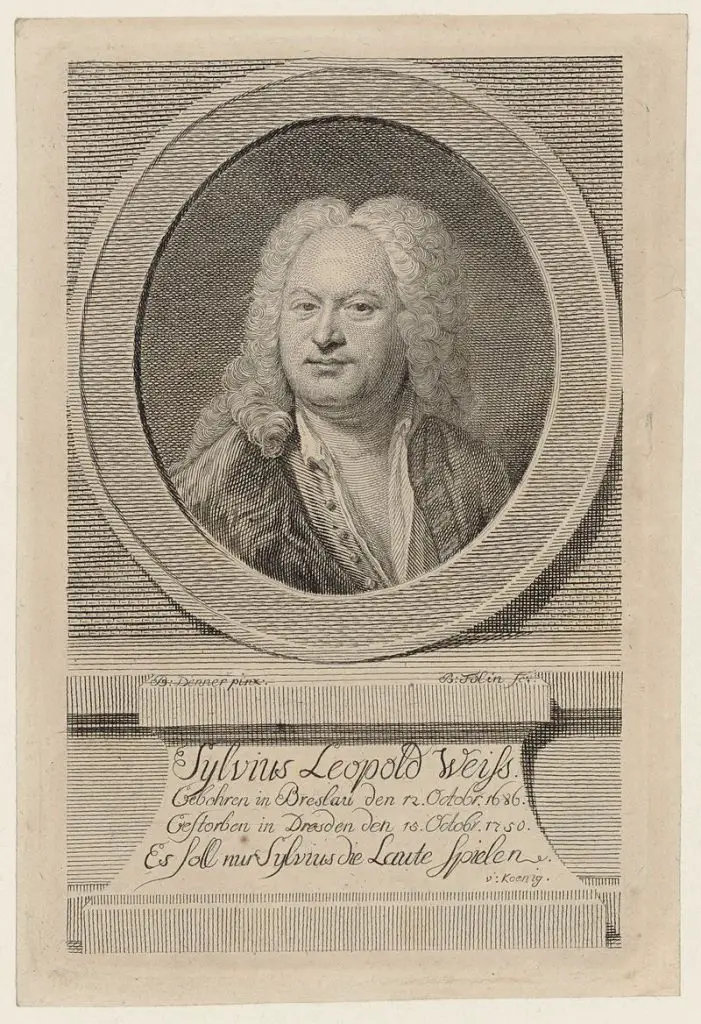
Sylvius Leopold Weiss was born in 1687. This German lutenist was a prolific composer. As history tells it, he was the author of over 600 lute compositions. At some point in his life, Sylvius met J.S Bach and even challenged him to play fantasies and fugues.
Arnold Dolmetsch

Arnold Dolmetsch is credited with starting the modern-day revival of the lute. This French musician loved creating instruments, and he had his own instrument-making workshop.
Today, there are more modern lutenists than many people realize, and the numbers are growing. The following is a small sampling of some of the most recognized lutenists in the world.
· Jozef van Wissem
· Jakob Lindberg
· Hopkinson Smith
· Paul O’Dette
· Paul Beier
· Shirley Rumsey
· Rolf Lislevand
Those who want to learn the lute should first listen to some of the master musicians above. Once a person has heard the lute played properly, they cannot help but become entranced by its beautiful sound.
Lute Vs Guitar – Conclusion
The lute is one of the most beautiful instruments in the world. Although it has a bit of an odd shape, when compared to the guitar, the sounds it produces are nothing short of mesmerizing.
If you are a guitar player, you can create the sound of the lute by using a capo or changing the third string to an F sharp.
Guitar players who transition to playing the lute will find there is a bit of a learning curve, but this instrument can be learned fairly quickly, once the musician learns the proper technique.
Author Profile
-
Daniel Johnstone is an English writer with a love for stringed instruments from around the world.
He shares his love for these instruments through his writing for folkstrings.com, a website dedicated to all things related to folk string music.
Daniel's passion for music started at a young age, and he has since become an accomplished musician, playing guitar, cavaco, and recently, the harp.
His dedication to learning and sharing his knowledge of stringed instruments is evident in his insightful and engaging blog posts. Whether you're a seasoned musician or a beginner, Daniel's writing is sure to inspire and entertain you.
When he's not playing music or writing, you can find Daniel exploring new instruments and seeking out new sounds to share with his readers.
Latest entries
 AutoharpApril 4, 2024What Is the Autoharp Made Of: Exploring Its Materials and Craftsmanship
AutoharpApril 4, 2024What Is the Autoharp Made Of: Exploring Its Materials and Craftsmanship AutoharpApril 4, 2024Is Autoharp Easy to Play? Unveiling the Truth for Beginners
AutoharpApril 4, 2024Is Autoharp Easy to Play? Unveiling the Truth for Beginners AutoharpApril 4, 2024What Is an Autoharp Worth? Your Guide to Pricing and Value
AutoharpApril 4, 2024What Is an Autoharp Worth? Your Guide to Pricing and Value AutoharpApril 4, 2024Are Autoharp and Zither the Same Thing? Unraveling String Instrument Myths
AutoharpApril 4, 2024Are Autoharp and Zither the Same Thing? Unraveling String Instrument Myths
Affiliates:
This post may contain affiliate links that at no additional cost to you, the site may earn a small commission. We only recommend products we would use ourselves and all opinions expressed on this site are our own.
Accuracy Advice:
While we strive to provide up-to-date and accurate information, the content in this article may not reflect the most current research or medical guidelines. We encourage readers to do further research and consult with professionals for more personalized advice.
Our Recommendations:
The products and services mentioned in any of our articles are recommended based on our independent research and personal experience. We are not sponsored by any company. We aim to suggest products and services we believe are of high quality and could be beneficial to our readers.

